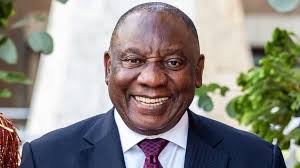In a bold move to strengthen governance and enhance the efficiency of his administration, President Cyril Ramaphosa has reshuffled his Cabinet, signaling a fresh approach to leadership. The reshuffle comes in the wake of a statement from the office of the Presidency, which reaffirmed the President’s constitutional authority, noting that the Constitution of the Republic of South Africa, 1996, vests executive power in the hands of the President, supported by a team of Cabinet members who play a critical role in upholding the country’s constitutional and legislative mandates.
According to Vincent Magwenya, the spokesperson for the Presidency, the changes are aimed at streamlining Cabinet performance and ensuring a more effective government. The reshuffle aligns with Section 91(2) of the Constitution, which empowers the President to make such changes in the executive branch as deemed necessary for optimal governance. Ramaphosa’s adjustments reflect both the need for adaptability in leadership and a commitment to meeting the evolving demands of the nation.
One of the key appointments sees Mmamoloko Tryphosa Kubayi, the former Minister of Human Settlements, assuming the pivotal role of Minister of Justice and Constitutional Development. Kubayi’s extensive experience in managing complex portfolios is expected to serve her well in this new capacity as she takes on the responsibility of overseeing the nation’s legal and constitutional frameworks.
In a reciprocal move, Thembi Nkadimeng transitions to the Ministry of Human Settlements, after her tenure at the helm of the Department of Justice and Constitutional Development. Nkadimeng’s shift highlights the fluid nature of the Cabinet reshuffle, with seasoned leaders being strategically placed to bring fresh energy and expertise to new sectors. Her background in justice will likely bring a unique perspective to the management of housing and urban development in South Africa.
Phumzile Mgcina also experiences a shift, now assuming the role of Deputy Minister of Mineral and Petroleum Resources. This change sees her moving from her previous role as Deputy Minister of Labour and Employment, where she contributed to the government’s efforts in improving working conditions and addressing labor issues. The new position places her in an influential role within one of South Africa’s most vital economic sectors, and her leadership will likely focus on driving sustainable growth in the mining and energy industries.
Lastly, Judith Nemadzinga-Tshabalala takes on the role of Deputy Minister of Employment and Labour, moving from her prior position in the Ministry of Mineral and Petroleum Resources. This repositioning underscores the dynamic nature of governance in South Africa, with leaders being rotated across departments to leverage their skills and broaden their influence. In this new role, Tshabalala will be tasked with addressing the country’s pressing labor challenges, ensuring greater employment opportunities and fair working conditions for South Africans.
With these changes taking effect immediately, President Ramaphosa expressed his confidence in the capabilities of his new Cabinet members, wishing them success in their new positions. The reshuffle reflects a broader vision for a more agile and responsive government, one that is better equipped to navigate the challenges of the current political, economic, and social landscape. Through these strategic adjustments, Ramaphosa aims to not only improve governmental efficiency but also to reaffirm his commitment to the ongoing development of South Africa.
